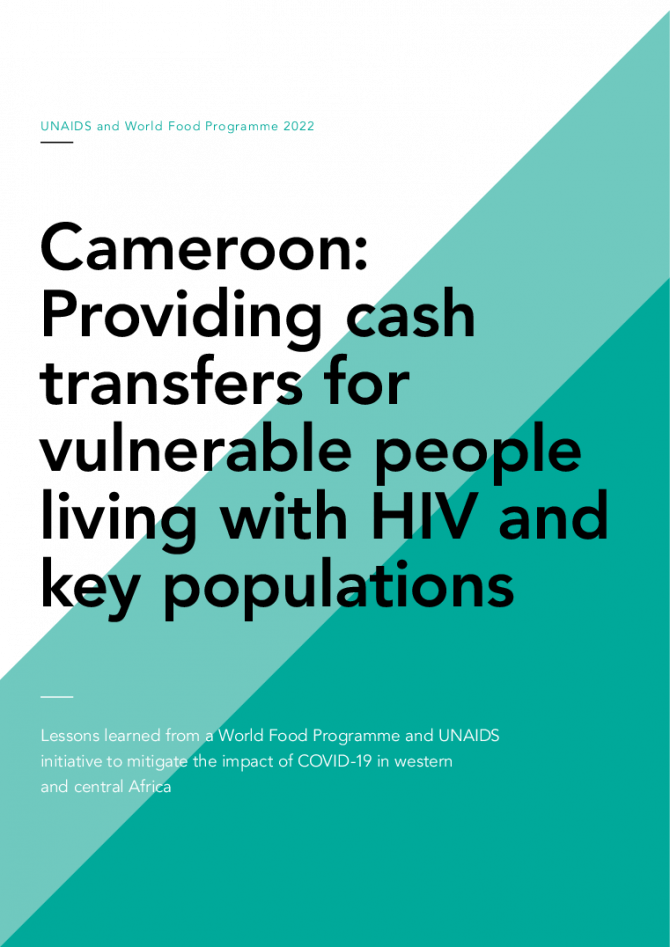Documents
Cameroon: Providing cash transfers for vulnerable people living with HIV and key populations — Lessons learned from a World Food Programme and UNAIDS initiative to mitigate the impact of COVID-19 in western and central Africa
07 July 2022
Cameroon is a lower-middle-income country in central Africa with more than 26 million inhabitants, approximately 39% of whom live below the poverty line. Ranked 153 out of 189 in the 2019 Human Development Index, the country benefits from rich natural resources; however, weak governance hinders its development and ability to attract investment. Cameroon is also dealing with humanitarian crises on three fronts: the far north, the east and the north- and south-west regions, whereby armed conflict has triggered significant internal displacements. The crises in these regions have weakened already fragile livelihoods; reduced access to health services, education and basic amenities; and compromised food security and nutrition. The coronavirus (COVID-19) pandemic has compounded these challenges on multiple levels.

